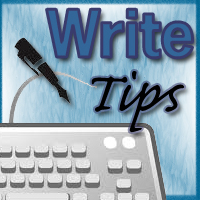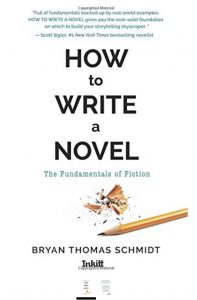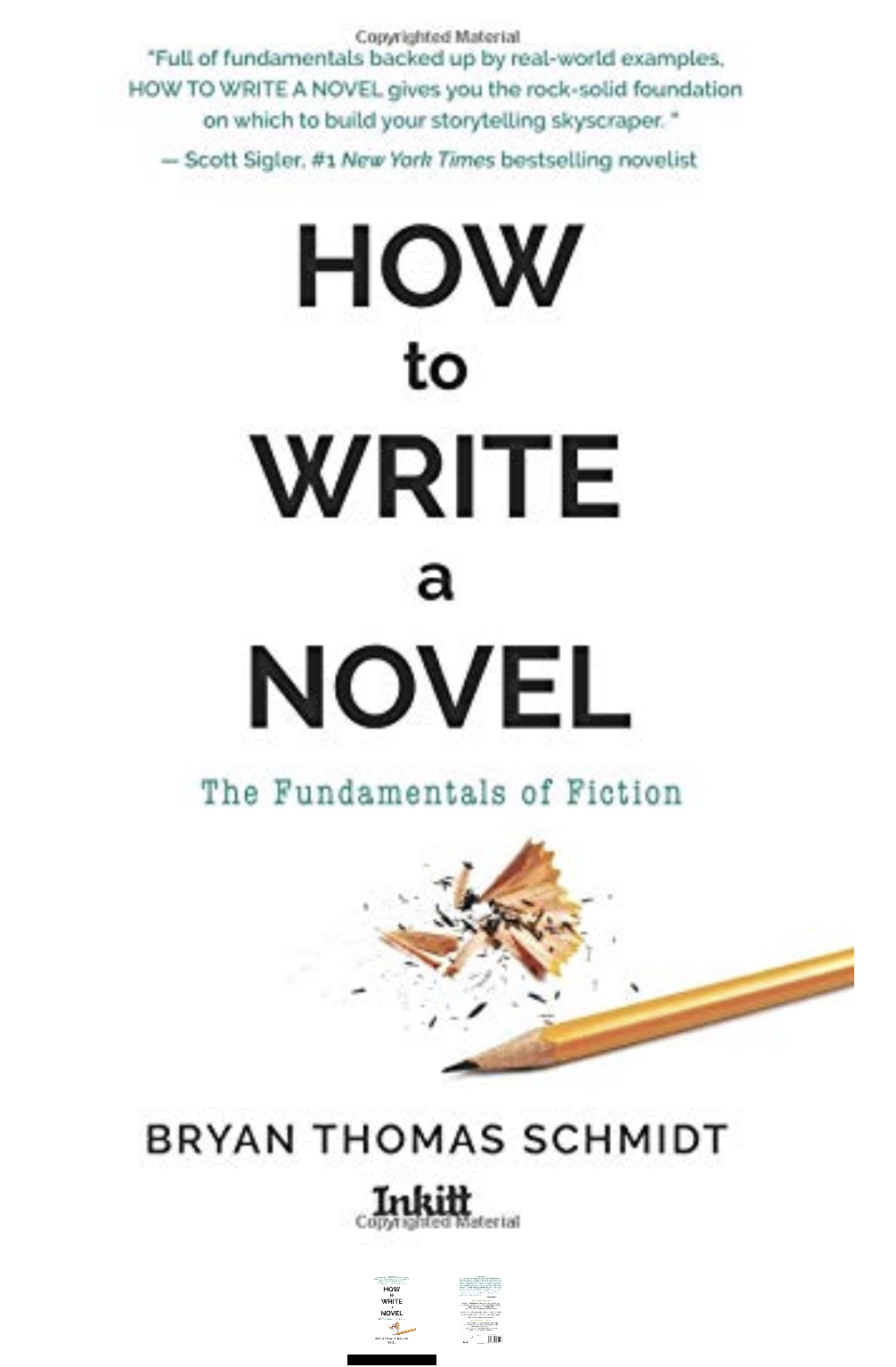 The following is an excerpt from my book How To Write A Novel: The Fundamentals of Fiction, Chapter 9: Worldbuilding. It is part of a multipart series. For Part One, click here. For Part Two, click here.
The following is an excerpt from my book How To Write A Novel: The Fundamentals of Fiction, Chapter 9: Worldbuilding. It is part of a multipart series. For Part One, click here. For Part Two, click here.
Science and Industrial Development
The battery was a lithium thionyl chloride non-rechar-geable. I figured that out from some subtle clues: the shape of the connection points, the thickness of the insulation, and the fact that it had “LiSOCl2 NON-RCHRG” written on it. (The Martian, Andy Weir) The planet’s famous red colour is from iron oxide coat-ing everything. So it’s not just a desert. It’s a desert so old it’s literally rusting. (The Martian, Andy Weir)
Another key area of world building is always science and industry. But in science fiction, the futuristic and scientific aspects of this take on special importance and significance for both narrative plausibility and practical reasons—science and development are key elements readers expect. Science Fiction readers love cool tech and science that makes sense or even the hint of such. Even if it is not real, if you make it sound plausible, they will often find this fascinating and engaging.
What kind of transportation methods exist? Horses and wagons or buggies? Cars and trucks? Planes or space ships? Hovercraft? Each type of transportation requires the industrial and scientific development to make them possible. Given we barely have anything of the sort ourselves, a lot of thought will need to go into these aspects. Where do they get the fuel? How did they devise it? What materials are starships made of and their various parts? Do they have laser or projectile weapons? What kind of defensive armaments do people and ships have and what are they made of? Are they physical or digital? Etc.
 Then there are questions of military? What type of military do they have—formal or informal? Private or government? Do they have armor? What type? What is the structure and ranking system? Where are the bases and training facilities? How do they recruit—volunteers or conscription? Do they use animals or vehicles or both? What kinds of duties and missions are they called upon to undertake usually? What is their history? What is their relationship with larger society—respected or hated? Feared or loved? Etc.
Then there are questions of military? What type of military do they have—formal or informal? Private or government? Do they have armor? What type? What is the structure and ranking system? Where are the bases and training facilities? How do they recruit—volunteers or conscription? Do they use animals or vehicles or both? What kinds of duties and missions are they called upon to undertake usually? What is their history? What is their relationship with larger society—respected or hated? Feared or loved? Etc.
Technological dependence also says a lot about a culture and affects it in many ways and has many meanings. How advanced are they? How did they get there? If there is tech and science, there must be engineers and scientist. How did they develop these abilities and create or acquire the tools required to perform the tasks? Do they make them themselves or trade for them? How do various cultural approaches differ in performing, understanding, and approaching various tasks? Here’s an aspect where time frame, as mentioned earlier, plays a key role. If they are a far advanced society, time frame matters. For humans especially, believable time must have passed for certain technologies to be possible. And again some require sciences and engineering feats we have yet to develop so time must be allowed for those to occur as well. For alien cultures, it is possible to have societies which are advanced over our own, but again, they must have science and tech and engineering knowledge and skills that they acquired earlier which surpasses our own. Not all of this always has to be explained in detail but the writer should think it through and be full aware of the implications of it and write the story accordingly so it adds credence to the world building for readers.
Are there robots or androids? Are human cyborgs or modified humans part of it? What about animals? Are there hybrids? Is there nanotechnology? What is the state of computers and media? Is there virtual reality? What problems from our own world and times have been solved to make such things possible or to advance society? What modifications to laws, mores, etc. have been required to permit the developments, if any? What sciences are used and understood by alien cultures and how does this compare to human knowledge? What ability to exchange such information exists? Writers must consider all of this and more as they create.
I realize that at this point, you may be feeling overwhelmed by all that we’ve covered. But I hope you are beginning to see the complexity of world building and how one set of questions leads to many others on many different topics. There’s a reason so many authors choose to work with our existing world and its history rather than make up their own. It’s complicated to create a well-rounded world, and as I have said, you don’t always know what you’ll need until you need it, but it is also easy to overlook things that may stand out to readers as omissions that were important to questions they are asking.
The rest of this chapter, we’re going to cover some areas that get overlooked a lot in world building but may be just as important as the rest. Let’s start with Agriculture, Horticulture, and Diet.
Agriculture, Horticulture, Diet, and Medicine
On the bare forest floor, in the open space between the trees, grew stemless plants of colossal size. Their leaves, four or five inches broad and eight or nine fee in length, sharp-toothed along their sides and metallic of texture, were arranged in loose roset-tes. At the center of each gaped a deep cup a foot in diameter, half filled with a noxious-looking greenish fluid, out of which a complex array of stubby organs projected. It seemed to Valentine that there were things like knifeblades in there, and paired grinders, that could come together nastily, and still other things that might have been delicate flowers partly submerged. (Lord Valentine’s Castle, Robert Silverberg)
Agricultural development is very much determined by geography and technological and scientific development. What types of crops and animals are used for food and clothing, depends upon the resources available like location of water supply, crops, grass and plant life, landscape, and more. You won’t grow much in a desert, for example, but if there are oases with water, some sheep herding can occur, like in the Middle East. There can be camels, horses, and other desert animals. In mountains, it is hard to farm the land, but there can be animals who live there as well like bears, venison, various birds, and other mammals which could be hunted for food. Plains are great for farming but limited as home for much beyond domestic animals, though coyotes, wild birds, rabbits, and other animals may thrive. And with each decision about animals, it is important to consider predators and prey—the circle of life. For anywhere one group of prey live, predators will arise to feed on them, and not just humans, but other animals. Additionally, landscape determines what kinds of bushes, shrubs, grasses, trees, etc. will be available and natural to the region for animals to live in and eat from, etc.
What type of crops you have and natural resources, of course, determines the diet of local humans and other inhabitants, and so plant life, crops, water, etc. all determine what people will eat in various parts of your world and how much as well as what they may trade to other areas for goods they cannot get. At the same time, what clothing they wear is determined by land and weather conditions and resources as well. Do they have technology to manufacture clothing or make it by hand? And so on. Sartorial concerns are easy to overlook. I remember one of the first editor comments on The Worker Prince, my first novel was “You’ve written 90k words without mention of what anyone is wearing. It seems odd.” Ooops. So I had to go back and work that in and think it through. I know of other authors who have had similar experiences.
Along with crops, animal husbandry and resources comes the issue of medicine. What kind of medicinal resources do they have? Formal or informal? Do they make drugs or manufacture them? Do they use home remedies or chemically devised cures? Do they have trained medical personnel or just village experts? Etc. Who treats the animals? What kind of training do those people have? Is it science or magic? And if magic exists, how does that work and what are the costs of performing the spells or using magic? There is always a cost for everything. Sometimes casting spells can only be done once every few days, sometimes it costs blood or energy that wipes out the magician, etc. These and more concerns become very relevant.
If there is technology, do they use machines to farm or just animals and primitive equipment? How industrial is agriculture? How regional is it? What about fishing or hunting or trapping? Can they make hybrid plants somehow by cross pollinating or do they just have to plant whatever seeds they can find?
As we think about landscape and natural resources like plants and trees, we must also consider architecture and design. Do they have formal architecture or is it regional and informal? Are there whole industries for construction and design or is it done on the fly? Are quarries and mining involved? How do they gather materials? What issues and regional concerns come into play to determine locations of towns and types of housing, etc.? Are there formal schools or are people educated at home? What kind of educational system and higher learning is available? Are there apprenticeships? Are there internships? Trade guilds? What kinds of tools and equipment do they have available and how are those manufactured? And then, where do they get the money to buy land and build? How is land and wealth allotted? What role does it play in society?
Beyond that, what about energy production? Nuclear, solar, wind, fusion—what kind of power will there be? What of war? What of peace? What about nuclear and chemical weapons? What will medicine look like? Will we have cured diseases, genetic defects, cancer? What new answers and treatments will have been devised? What communication devices and methods will be common? What will have faded away?
Money and Business
Figure 9-1. (Monetary exchange rates in The Name of The Wind, Patrick Rothfuss, cited on http://www.brinkofcreation.com/KKC-CurrencyExchange/CurrencyExchange.html)
Money and economy are one of the most overlooked of world building concerns. Patrick Rothfuss in his Kingkiller Chronicles, beginning with The Name Of The Wind, is an author noted for having created a sophisticated economy for his world, including different monetary systems for various people groups and conversion and even commonwealth currency for use in trade between them. The system is sophisticated enough that fans on Reddit have figured out approximate conversions to U.S. dollars and Rothfuss himself has created the above widget and can lecture on the system for an hour or more. That is a well-thought out system. And of course, along with money comes the entire business system and how it functions related to currency and trade and what types of businesses thrive and arise according to resources available as well as needs of the world. Various service industries like money changers and trade posts will arise if needed along with banks, law enforcement, security, and more, but then there are various other businesses as well taking on roles in making food, clothing, and materials, etc. and sometimes even vendors who then sell their products to the public.
The key element is what they value—what their economy is based on. In much of the Western world and the wider world today that would be minerals like gold, silver, bronze, diamonds, etc. In ancient Africa, however, much value was placed by many tribes on conch shells. They used conch shells to make everything from jewelry to clothing to even tools, weapons, and more. Once Europeans discovered this, they began trading conch shells for things they valued far more like gold, diamonds, etc. which were abundant in Africa. The Europeans found many sources for obtaining conch shells, and since the African tribesmen valued them so much, convincing them to trade something the Europeans considered worthless for things they coveted, was easy. It also gave the Europeans immense power over the Africans, particularly because conch shells were cheap and easily obtained and not valued greatly by anyone else around the world. In part, the colonization of Africa came about at least economically because of this dichotomy. The Europeans used it to establish inroads they exploited to take over mining and other industries to extract minerals and eventually conquer the tribes and their land. So what do people in your worlds and cultures value? How does that affect their trade relationships and subsequent power relationships with others? These are major concerns related to the economic system of your world building which should be carefully considered.
Economic systems can get immensely complicated very quickly, of course, but careful thought should at least be given to basics needed for the story. And then you should be prepared to address the various issues and needs these concerns raise as you go, if you want to create a believable system that doesn’t leave readers confused, frustrated, or scratching their heads.
(To Be Continued)



 Here are some key things you need to know about your characters to write them well:
Here are some key things you need to know about your characters to write them well: